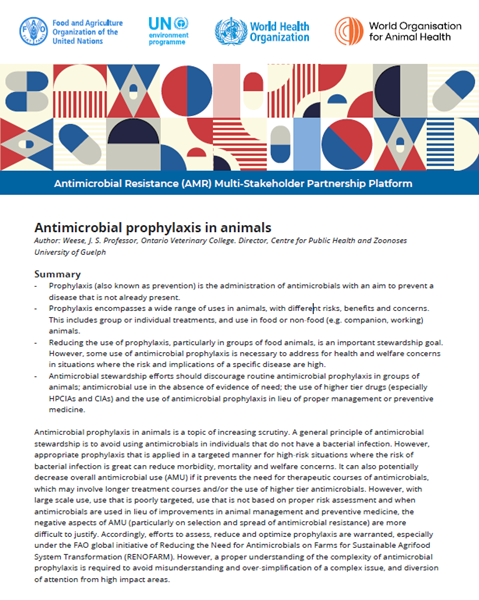Antimicrobial prophylaxis in animals
19 February 2025
| Technical document

Overview
Prophylaxis (also known as prevention) is the administration of antimicrobials with an aim to prevent a
disease that is not already present.
- Prophylaxis encompasses a wide range of uses in animals, with different risks, benefits and concerns.
This includes group or individual treatments, and use in food or non-food (e.g. companion, working)
animals.
- Reducing the use of prophylaxis, particularly in groups of food animals, is an important stewardship goal.
However, some use of antimicrobial prophylaxis is necessary to address for health and welfare concerns
in situations where the risk and implications of a specific disease are high.
- Antimicrobial stewardship efforts should discourage routine antimicrobial prophylaxis in groups of
animals; antimicrobial use in the absence of evidence of need; the use of higher tier drugs (especially
HPCIAs and CIAs) and the use of antimicrobial prophylaxis in lieu of proper management or preventive
medicine.
WHO Team
Quadripartite Joint Secretariat on AMR
Number of pages
4
